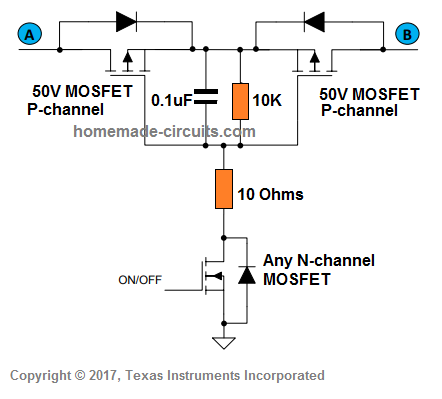No need of pulldown there.
It's much simpler to use P-channel fets.
You can sample the voltage after the first mosfet, knowing there's a diode in between, and turn the fets on when a safe voltage is detected.

Yea, I saw a TI document that showed that. For their bidirectional power switching. Unfortunately, I'm using SOT363 sized dual mosfets because I'm very space constrained, and then cost constrained. So I'm not sure I can afford size withe discretes or cost with an integrated part. But I would love an integrated part there.
I think you're saying I can protect A or B by using an ADC or comparator or whatever between A and B somewhere above the NPN in order to see if either A is bad for B or vs. I like that. But it doesn't apply here. I need to protect all the time unless there is a gate voltage, if there is a gate voltage, I know it's already safe.
I'm not sure that is easier than a dual NPN. The only issue I see with mine is that I need a larger gate voltage than my signal, which is fine. I can get 9-12V there very easily. My concern was thinking that S1/S2 would be floating. But it isn't. It's subject to leakage is all, small, but enough to drive the voltage too high for a 3V3 gate.
So... If using my circuit. If I had a pull down, it would be more likely to trigger gates with a 3V3 wouldn't it? Because G to S1/S2 would always be over Vth? Same if the right side was grounded no? But without a pulldown, and without right side to ground, S/1S2 would be 3V3, and not work.... I'm guessing.
It's the gates which may need pull-up/down resistors.
The circuit doesn't make much sense on it's own, even with the brief description. What sort of signal is it switching?
Yea, there is a 1K gate protection resistor, and a 47K pull down for bias. It's for a JTAG data signal, so I'm trying to not molest it too much. I am putting in a spot for a cap to ground and a small value resistor, IDK if I'll need them or the values. And I'm not sure if I'll have to slow JTAG down. It's for programming only but in circuit I can't guarantee what signals the external connector will have.